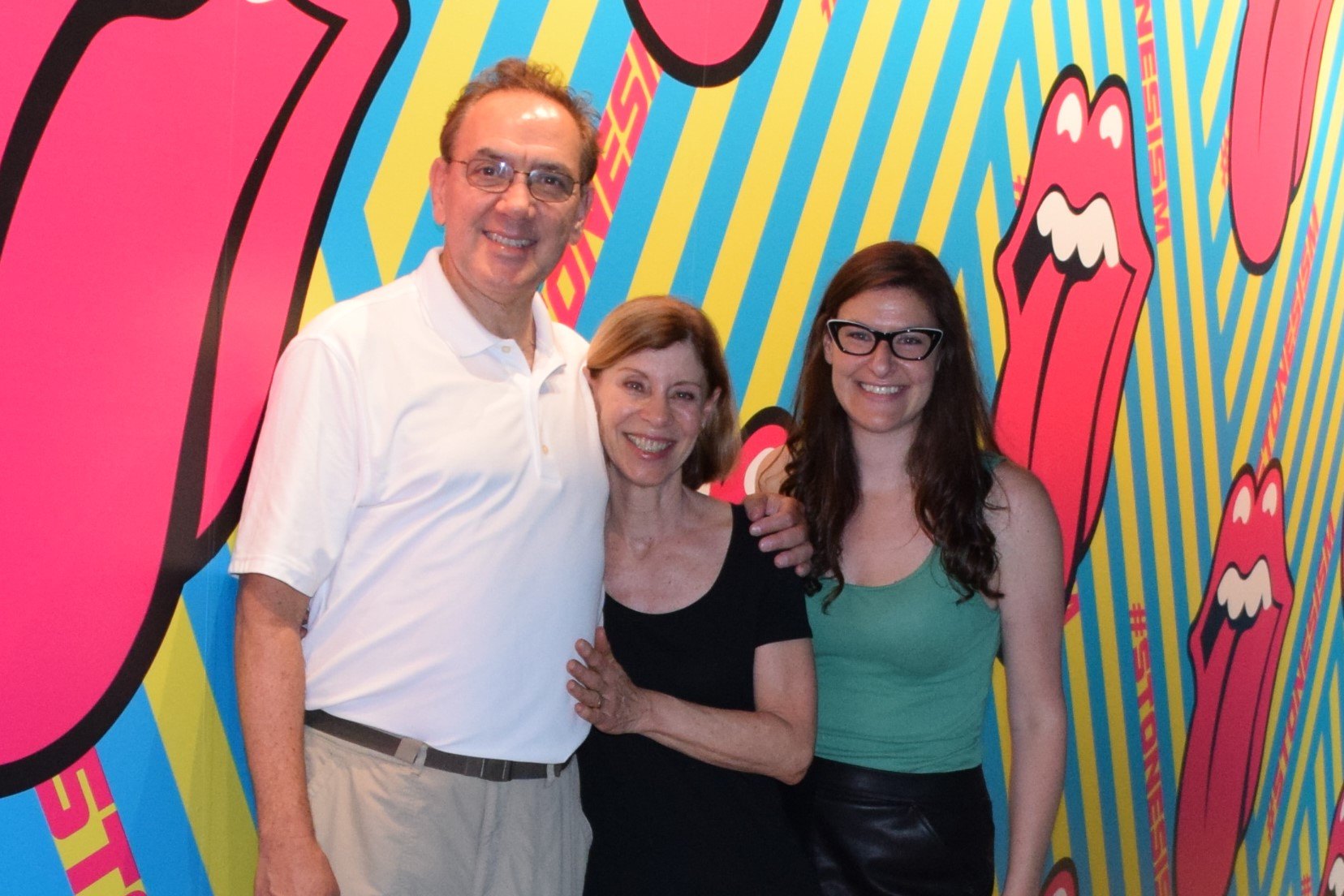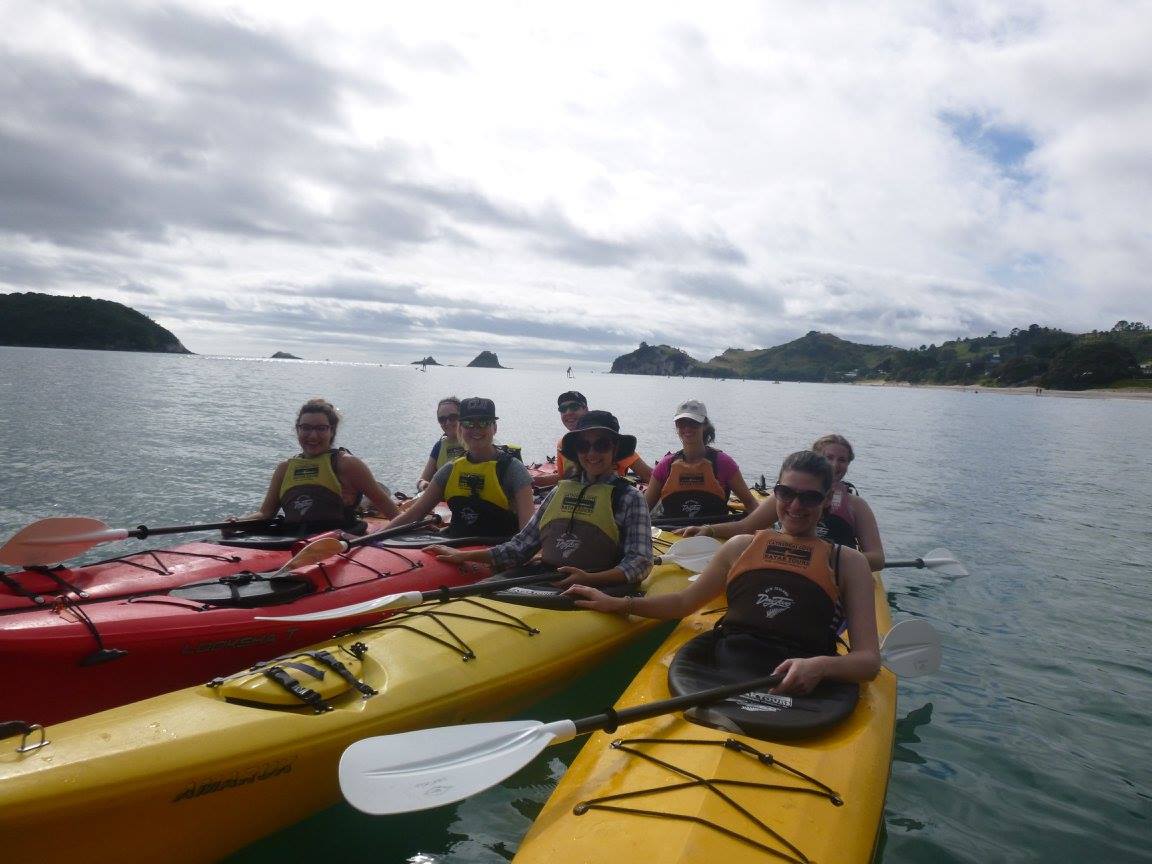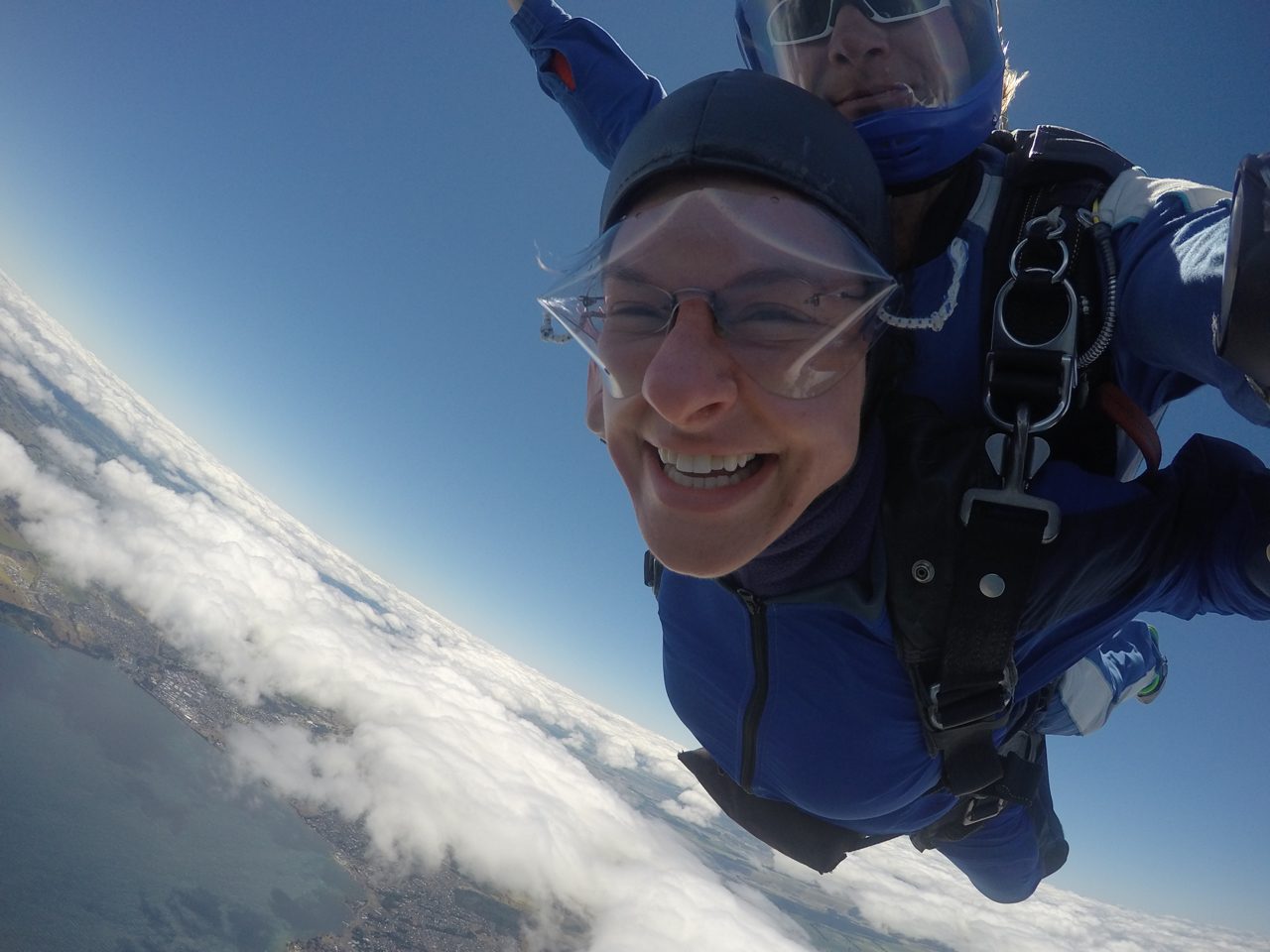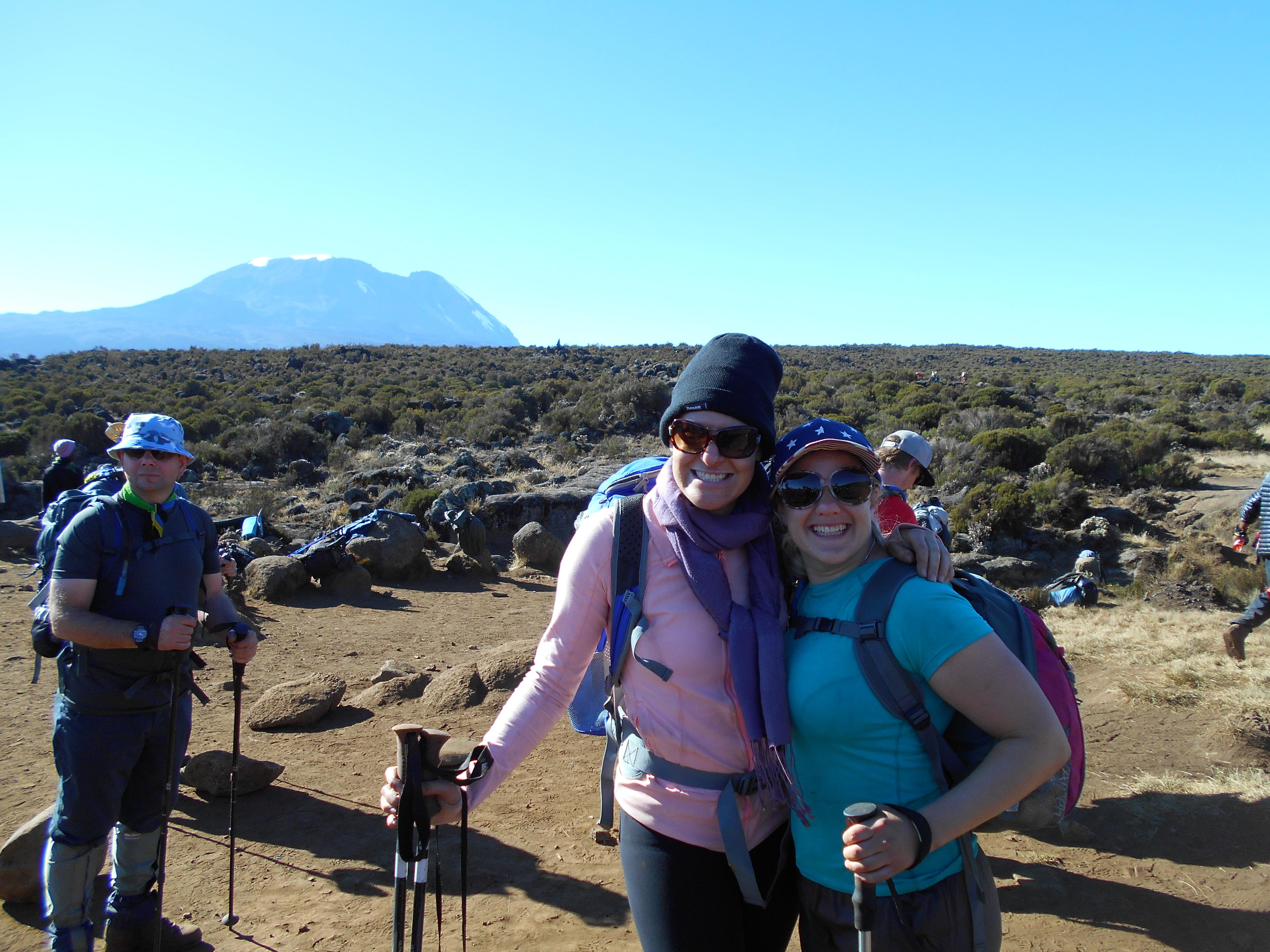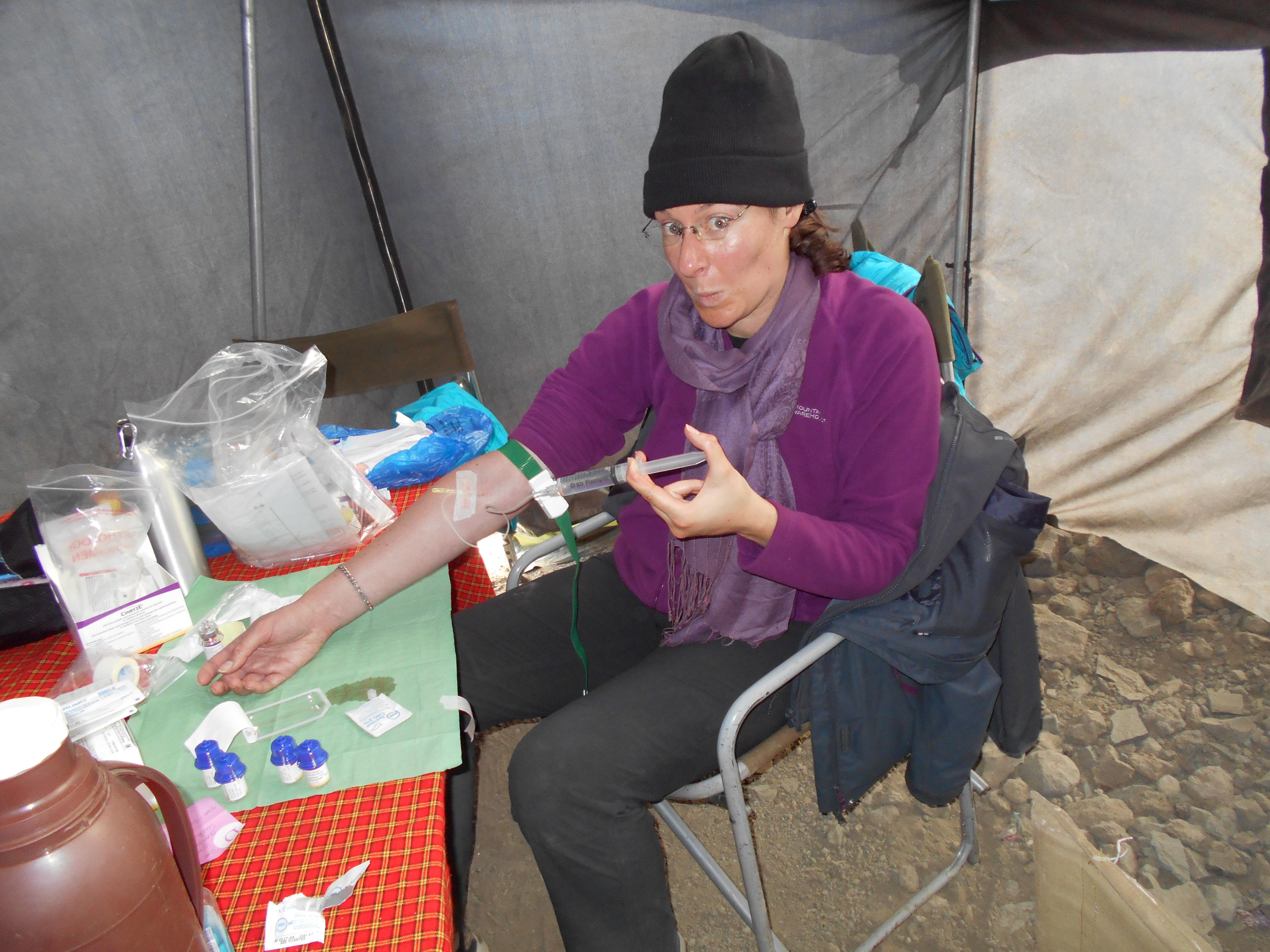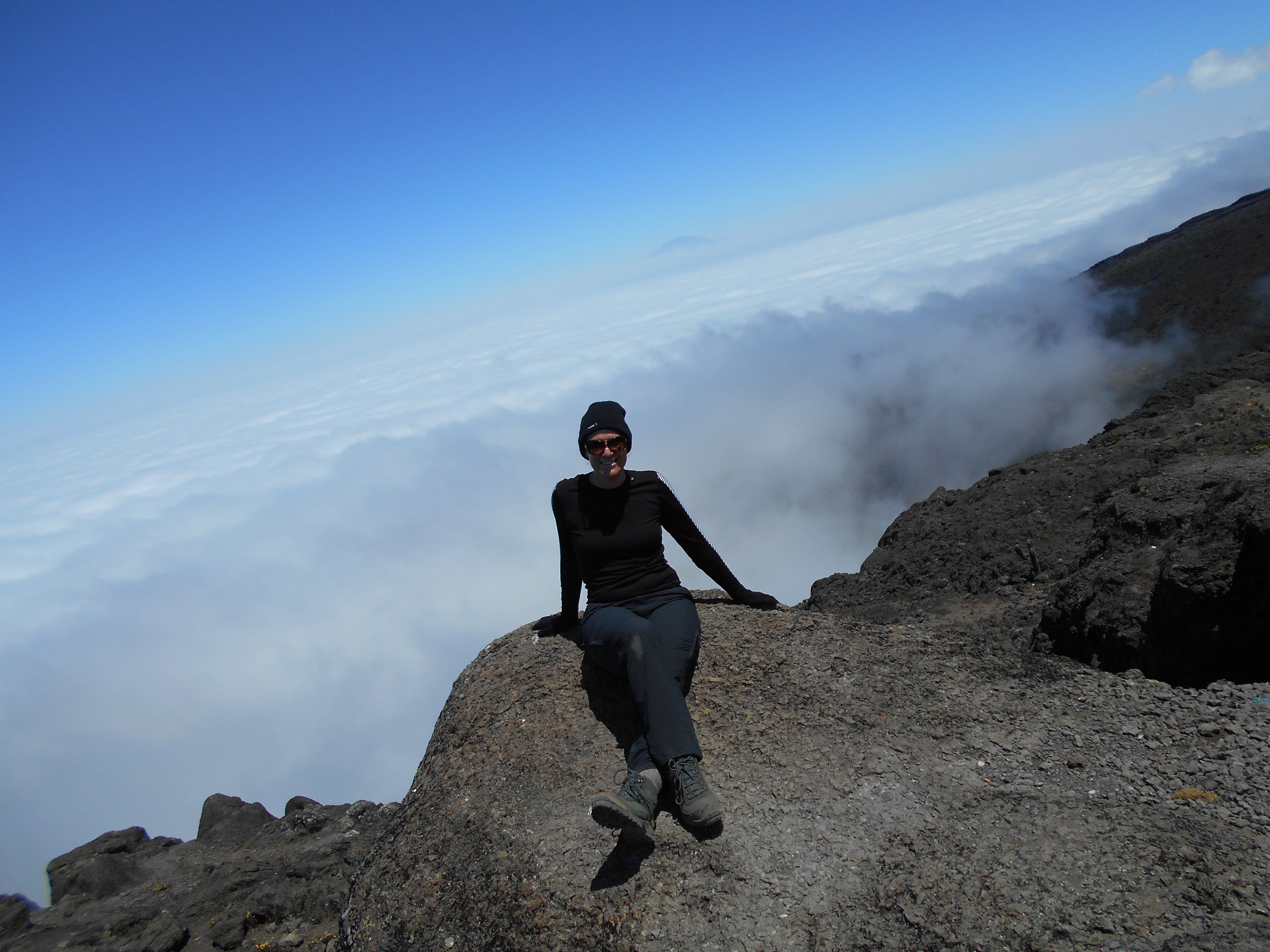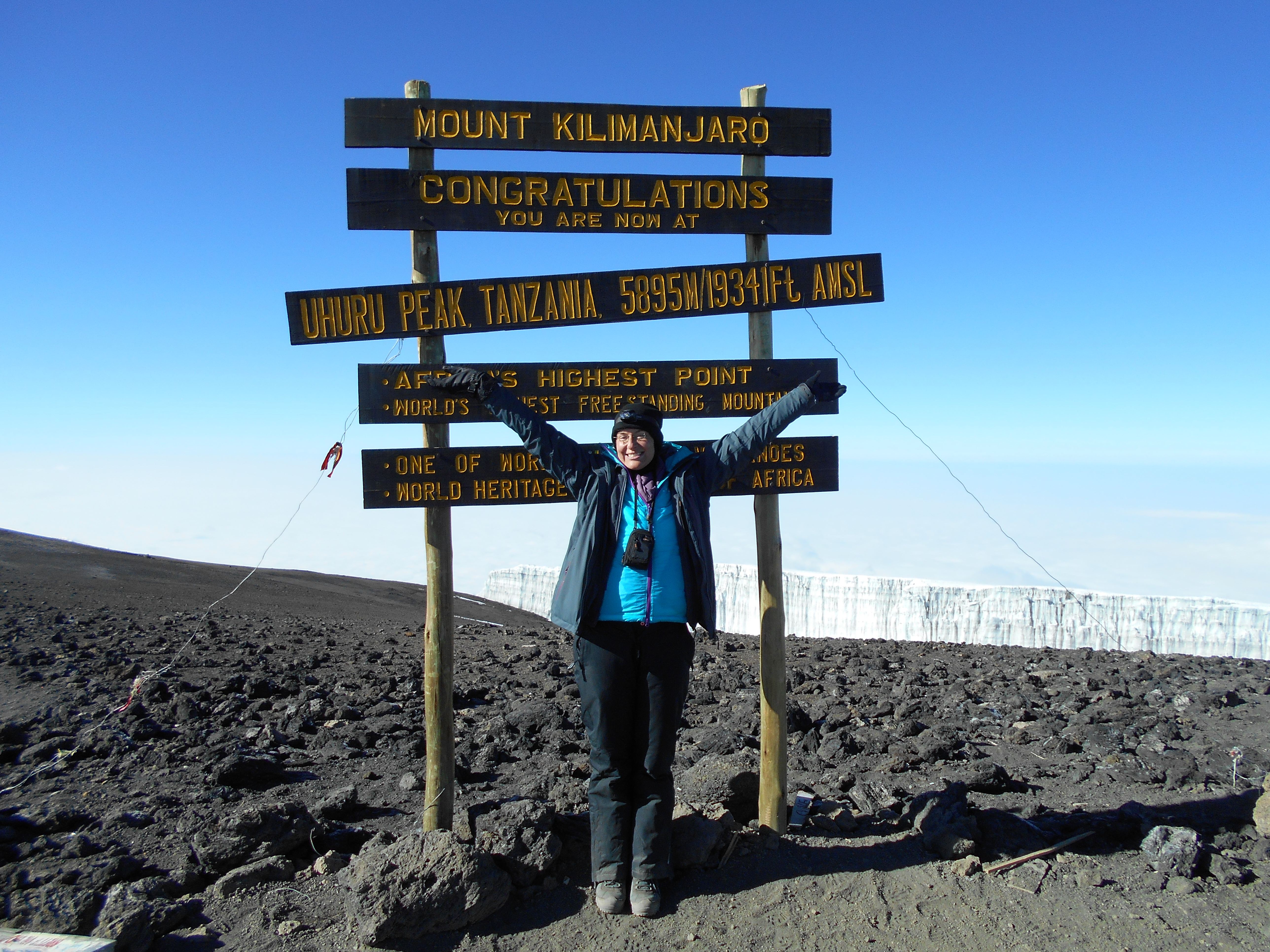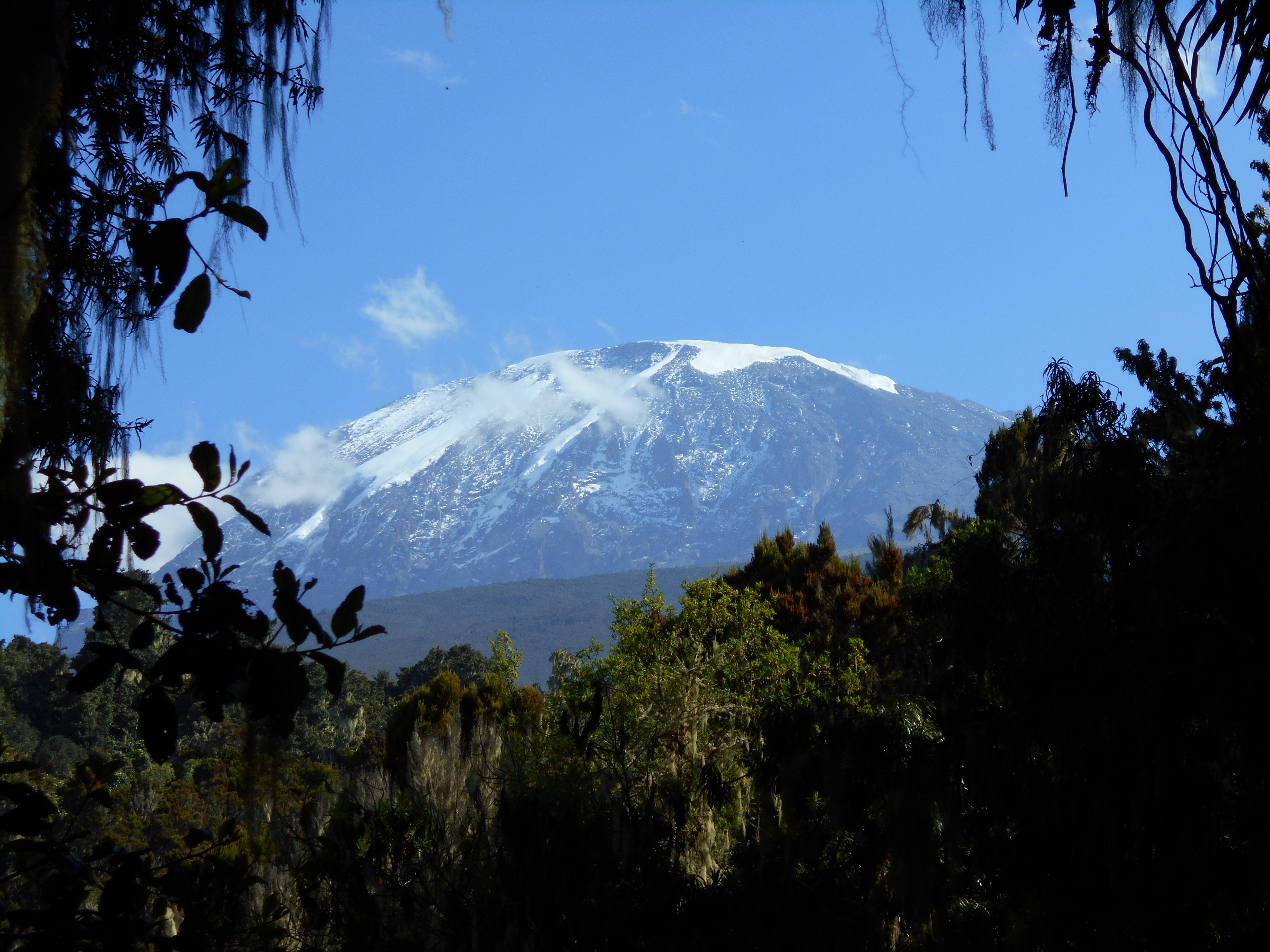DANA SHAPIRO,
UNITED STATES/UNITED KINGDOM (1986)
Dana Shapiro (United States / United Kingdom) used her fears about HAE as motivation and to build resilience and confidence to climb Africa’s highest mountain, Mount Kilimanjaro.
I was diagnosed with HAE in April 2003 at the age of 16. Childhood ended abruptly and now I had HAE. I was confused. I was shocked. I was scared. I felt as if I was carrying the weight of mountains on my shoulders. What would the rest of my life be like?
At that time, I was still living in the US and there were no HAE-specific medications available. I was prescribed Danazol, an anabolic steroid, that plunged me into a painful depression as I confronted what it meant to be a person with a rare disease. I gained weight. My voice got deeper – and as I was a singer that was challenging. Every aspect of life felt more difficult to handle. I started to nap in the afternoons. I felt as though I had turned into a science experiment – a specimen on a petri dish for doctors to study.
The diagnosis was not easy for my parents either. My mother kept apologizing because the HAE came from her side of the family. She does not have HAE, but her mother did. My mother is one of the most optimistic people I know, but she found it challenging to accept the idea that I had a potentially fatal disease. She felt guilty that she passed the disease to me, so she went into protection mode in an attempt to keep me symptom-free. We thought that HAE was caused by stress, so she taught me a meditation technique to calm my body as much as possible when I was in pain. My father struggled to accept that HAE symptoms can be severe and life-limiting. He liked to pretend that I wasn’t ill when I was. Adjusting to the idea that I had HAE was challenging for my family and each of us felt helpless in our own way. I often suffered in silence. I started to feel as if I was broken.
But you tried to make sense of your new normal, I guess.
Yes, but I cannot say that I was succeeding. My family felt that I did not need to have mental health care, despite doctor’s recommending therapy on several occasions, so I was left to my own devices to manage my depression. I decided to ramp-up the amount of philanthropic work I was doing with the homeless and terminally ill for the selfish reason of making myself realize that other people were worse off than I was and that I still had something useful to offer the world.
When I was 17, I realized I had a choice: I could continue to let HAE control my life or I could reclaim my ability to decide. It was a minor step in the right direction – nothing had changed except my mindset: Does HAE call the shots or do I?
At that point, what did you think about your HAE?
I had no idea that HAE would become both the worst and the best thing to ever happen to me. I had no idea that my fears about death and an unlived life would prove to be such intense motivators, but I knew that living the way I had been since my diagnosis was unsustainable. I knew that I could not continue on a path that was so negative. Making a conscious decision to improve how I felt about HAE was the first step up a steep mountain that allowed me to believe that I had some control over my life.
When I was 19, the steroids had caused my liver enzymes to be abnormally high, so I was taken off Danazol in mid-December 2005. I was encouraged to take time off from my university studies to allow my body to heal, but I resisted. I felt that if I paused my educational life, I might never return. To compound my distress, I went through withdrawal that was not supposed to occur with Danazol, and I dropped nearly 50 pounds by March 2006. My change in weight caused significant worry for my parents. I lost the ability to eat tomatoes – they caused HAE in my throat – so I gave them up. My university friends who never knew I had an autoimmune disease were suddenly privy to my private agony, pain and fear.
Around that time you started discussing HAE with your great aunt who had a case of HAE more severe than yours. What impact did that have on you?
My great aunt became my role model and mentor. Throughout her life, she managed to maintain independence and a full-time job. She embodied the mantra, “You just have to keep going even when you feel terrible”. I decided to adopt her mantra. I tried my best to keep my head up and my spirits high even when I felt poorly. On Christmas Eve 2006, HAE claimed her life. In addition to being devastated by the unexpected extinguishing of her voice, I was reminded of the fragility of my own life and I was frightened by it.
As my undergraduate years progressed, my symptoms became more frequent and more severe. I continued to read about HAE online, but a medical understanding of what caused HAE symptoms did not seem to be evolving. I suffered from attacks when they came and took emergency steroids or trips to the hospital when I swelled in a potentially fatal region. After graduation, I started working full-time. It was then that I decided to learn more about my HAE with the hope that maybe I could better control it.
I ran 6-month tests on myself to see their impact on my HAE. I mentioned my experiments to my new doctor, and he laughed in my face. But, I persevered with the experiments anyway. I started by eliminating gluten from my diet. Gluten-free food was not as readily available as it is today, and the diet was difficult for my dessert-loving self, but my HAE symptoms were less severe and less frequent when I adhered to the regimen.
What were the other tests you did?
My second test was exercise. I had largely given up exercise after I stopped taking Danazol because most forms of physical activity resulted in swelling. Yoga caused my wrists and shoulders to swell, running made my feet swell, the elliptical made my hands swell, swimming made my shoulders and neck swell. Weight lifting or kickboxing were completely out of the question! I learned that any sort of physical activity resulted in my becoming ill.
I switched to more life-sustaining tests: hydration and sleep. I learned how my need for hydration changed when I got HAE. In the day or two before an attack, I would become less thirsty and seemed to retain more water. As my attacks subsided, I felt parched and drank more water than seemed necessary. When I was ill and in the hospital, I learned that I was always severely dehydrated. I realized that hydration was a key detail of HAE, even though I did not know why.
I tested the impact of changing my sleep schedule to understand how much sleep I needed. I typically became fatigued in the day or two leading up to an HAE attack, but sleep did not seem to alleviate the fatigue. What I learned from that experiment was that the amount of sleep I got mattered less than the consistency of sleeping time. If I was getting six hours of sleep each night, my HAE was not significantly impacted as long as I was consistently getting six hours of sleep every night. If I suddenly slept for eight or four hours, then I would get HAE symptoms.
For the first time, I started to listen to my body. How it felt. How it hurt. How long symptoms lasted. How it felt as I recovered. The idea that balance mattered to my health started to become clear. I learned that variability in my lifestyle was one of the worst things I could do for my health. I never experienced a time when I was able to stop my HAE symptoms from occurring, but I was better able to anticipate HAE attacks and could judge the severity based on my lifestyle leading up to the attacks.
Then in 2009, you were invited to join a clinical trial for the first HAE drug in the United States.
Yes, I went to the emergency room with HAE attacks 18 times in six months for the clinical trial. While the clinical trial took lots of time, the medication worked well on me. It gave me hope that the future would be brighter. But when the medication was legalized in the US, the cost of the drug and the logistics around the administration of the drug made it challenging to integrate into my lifestyle. I slowly reverted back to being sick all the time and visiting the hospital with potentially fatal attacks a few times a year.
What happened when you left the US in 2012?
When I moved to the United Kingdom for work, I had no idea that my relocation would impact my quality of life so dramatically. One year later, I was referred to a consultant who was an HAE specialist in the UK. When I arrived for my first appointment, I noticed there were HAE posters around the waiting area. I had never seen an HAE poster or information leaflet in my life. I sent my mother a text message with a picture of the poster and the message, “I think I am in the right place.” My first appointment was a long one: my new consultant and a panel of doctors on her team wanted to know my entire HAE story. They were interested in my Danazol experience, my difficulty with tomatoes, my experiments in my early twenties. My consultant arranged for me to have access to intravenous C1 and subcutaneous Icatibant. My family and I were curious and excited about what was yet to come.
I was fortunate to be able to use the National Health Service in the UK because the medication was delivered to my home and a nurse taught me how to self-administer. It was all free through the National Health Service – for an American, that felt like a miracle! My first few attempts at giving myself an intravenous injection were a challenge because I have a fear of needles. But after a few weeks, I was able to cannulate without having a panic attack.
How did self-administration change things for you?
While the absence of illness is not health, access to self-administered medication was a critical step to giving me more control in my life. I could decide if I wanted to be sick. I could make myself better if I was unwell. The medication worked well on me; it relaxed my anxious mind about my HAE. I became involved with HAE UK in early 2014. I began attending the HAE UK annual conferences. For the first time in my life, I met other people who had HAE besides family members. It was amazing! Slowly, the stresses and concerns of life with a rare disease receded and other areas of my life started to flourish. I became empowered to take more risks and try new things. I started to be able to live my life, instead of just trying not to die.
I know that you particularly like the quote, “These mountains that you are carrying, you were only supposed to climb” by Najwa Zebian. What has been your experience with climbing mountains?
I first discussed the idea of climbing Mount Kilimanjaro, the highest mountain in Africa, with my consultant in January 2015. To my surprise, she was supportive and suggested a few preventative measures. She made me aware of the risks of the climb, most notably that altitude causes increased fluid leakage through the walls of the blood vessels which means that HAE attacks are more likely at higher altitude. For the first time in my life, I wanted to put my body to the test in a way that was dangerous for healthy people, and someone said, “Yes, you can. Let me help you!”
My consultant put me in touch with another HAE patient who had already climbed Kilimanjaro. He seemed to have fewer HAE attacks than I did, but got HAE at the summit. His voice was another vote of support, but also one of caution. Speaking with him gave me hope that I could climb to the top while instilling the appropriate amount of fear that I needed to be careful and vigilant.
In the months leading up to the climb, I trained my body for the exertion by walking and eventually running to work. My team and my boss were supportive of my efforts. While most people struggled to understand why I wanted to climb Kilimanjaro, they wanted me to succeed. My final endurance test before climbing was to run the 6k to work consecutively for 14 days straight. I had my doubts that running the flatlands of London might not be the best preparation for trekking a mountain for eight days, but was confident that my improved cardiovascular health and endurance would still help.
As part of my preparation for the trip, I began taking the steroid Stanozolol daily as an additional precaution with the hopes that I would not have any HAE attacks while climbing. I had terrible side effects from the pills for the first two weeks, but I persevered until my body could tolerate them. My family was concerned that I was taking steroids again and they were nervous about my climb. I shared my research about health and safety on the mountain and explained my medical plan to protect me against HAE attacks. Despite the precautionary measures I was taking, they were supportive, but concerned for my well-being and wondered if I really needed to climb Kilimanjaro…I did.
The morning I began the climb, I administered 2,000IU of C1 in my hotel room in Moshi, Tanzania. The first few days of the climb felt easy to me. I enjoyed the gorgeous and ever-changing scenery. I felt strong, capable and excited as the temperatures steadily fell. There were 10 other trekkers climbing with me, and I was one of the lucky few who got very limited altitude sickness symptoms. But my fears centered around the 6th day of my trek when I would need to administer another C1 intravenously at 4,600 meters above sea level. This would be at near freezing temperatures having had no running water for six days.
I slept with my C1 and Icatibant in my sleeping bag at night to ensure they did not freeze as the temperatures dipped below freezing during our ascent. I could not sleep on the 5th night of the trek, and it is hard to know if it was from the altitude or because I was so petrified of giving myself an intravenous injection on the mountain the following day. In the afternoon of day 6, I sat in the dining tent and managed the intravenous injection with more ease than I could have imagined.
And then on to the summit.
Yes, at 11:30 pm, we prepared for our ascent to the summit. While I was still in my sleeping bag, I gave myself a subcutaneous Icatibant injection as another preventative measure and carried an additional Icatibant jab and C1 dose just in case I needed them at the summit. We started trekking up the last 1,000+ meters to the Kilimanjaro summit at midnight, under the cover of the most incredible stars I had ever seen.
“Poli poli,” that means “slowly, slowly” in Swahili, our guides repeated through the night and encouraged us to keep taking our tiny steps towards the top. I was lucky: I didn’t have any HAE attacks on the trip, and I made it to Uhuru Peak at 5,895 meters above sea level with eight members of my group.
The lack of air pressure at the top of the mountain makes you feel like every breath you take is a shallow, quarter gulp of air. But I felt giddy with accomplishment after making the heavy footsteps to the top. As I looked out over the vast planes of Tanzania, I reflected on all the times when people had told me that I couldn’t do something because it might make me sick, or that something was not a good idea because I had HAE or the times when I had to sit on the sidelines because I was too sick to be in the game. Determination, willpower and the right type of support made my crazy goal a reality.
As the fatigue of the day intensified, and I trudged back down past the receding glaciers at the summit, I was overwhelmed by the enormity of what I had accomplished because I believed it was possible and because I was surrounded by people who said, “Yes, go do it!”
You have told me that as time progresses, you have become increasingly proud of your accomplishment. Why is that?
It changed how I think about the barriers and fears I often have. While Kilimanjaro may not be the mountain everyone climbs, we all have our own mountain. Maybe it is a tough challenge at work? Difficult people in your life? Your own inhibitors keeping you from your dreams? Or your HAE getting in the way of you living your life? With a can-do mental attitude to try and people around you who support you, you can climb your mountains and make your way to the top.
Dana raised 2,482.46 GBP for HAE UK in honor of her Mount Kilimanjaro climb. She was asked to join the Board of Trustees for HAE UK in April 2017 and is excited to continue to contribute to the organization.
https://haei.org/hae-member-countries/united-states-of-america/
HAE related topics that might interest you
Global Perspectives
Magazine with timely information on the issues, activities, and events that are relevant to the global HAE community
HAEi Advocacy Academy
Courses, advocacy training, and tools to support people living with HAE and becoming an HAE advocate
HAEi Connect Member database
Free, secure online membership database and communications platform for HAEi’s member organizations
HAE Companion app
Access to HAEi’s emergency card in many languages and ACARE Centers, HAE knowledgeable hospitals and physicians
Stay tuned – sign up for our newsletter
BE THE FIRST TO KNOW ABOUT HAE NEWS, TREATMENTS, EVENTS AND RELATED TOPICS


